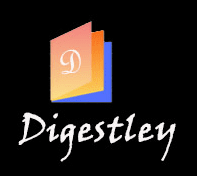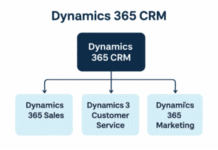Keeping your building lifts in top condition is crucial for safety, reliability, and long-term cost efficiency. However, not all lift maintenance companies provide the level of service you need. Choosing the wrong provider can lead to frequent breakdowns, expensive repairs, and safety concerns. To help you make an informed decision, here’s a guide to what to look for when selecting a lift maintenance company.
Table of Contents
The High Stakes of Your Maintenance Provider Decision
Selecting a lift maintenance company isn’t just another vendor decision; it’s a partnership that directly impacts your building’s operational success, tenant satisfaction, and your professional reputation as a property manager. In Singapore’s competitive property market, where buildings are often evaluated on their operational efficiency and tenant experience, the wrong maintenance provider can have cascading consequences that extend far beyond simple repair costs.
The financial implications of poor maintenance provider selection are often underestimated. Beyond direct repair costs, property managers face potential legal liability, insurance complications, tenant compensation claims, and the intangible but significant cost of damaged reputation. In Singapore’s tight-knit property management community, word travels fast about buildings with unreliable lifts, affecting both current tenant retention and future rental prospects.
1. Verify Licensing and Certification
A reliable lift maintenance provider must have the necessary licenses and certifications to operate legally and meet safety regulations. Be sure to check if the company is accredited by relevant industry authorities in your country. This ensures that their technicians follow strict safety guidelines and are trained to handle complex lift systems.
Understanding Singapore’s Regulatory Framework
Singapore’s lift maintenance industry operates under strict regulatory oversight that property managers must understand when evaluating potential service providers. The Building and Construction Authority (BCA) maintains comprehensive licensing requirements that go beyond basic business registration to include specific technical competencies and safety certifications.
When evaluating potential maintenance partners, verify that they hold current BCA licenses for lift maintenance work, ensure their technicians have valid Lift and Escalator Competency certificates, and confirm their compliance with the latest Workplace Safety and Health Act requirements. Additionally, reputable providers should maintain professional indemnity insurance and demonstrate ongoing compliance with Singapore’s evolving lift safety regulations.
2. Assess Their Experience and Expertise
Experience is a key factor when evaluating a maintenance company. How long have they been in business? Do they specialize in maintaining the type of lift system in your building? Look for a provider with a solid track record and expertise in handling various lift brands and models. Companies like Hin Chong offer decades of experience in servicing residential, commercial, and industrial lifts.
The Technical Complexity Behind Experience Claims
While many companies claim extensive experience, the reality is that lift maintenance expertise requires specific technical knowledge that varies significantly by lift type, age, and manufacturer. Singapore’s diverse building stock includes everything from 1980s hydraulic systems in older HDB blocks to cutting-edge destination control systems in modern commercial towers, each requiring different maintenance approaches and technical competencies.
When evaluating experience claims, dig deeper into the specifics. Ask potential providers about their experience with your exact lift model and manufacturer, their technician training programs and certification requirements, their inventory of specialized tools and diagnostic equipment, and their track record with buildings similar to yours in terms of age, usage patterns, and tenant demographics.
3. Avoid Hidden Costs and Unclear Contracts
Some lift maintenance companies offer seemingly attractive pricing but include hidden fees in their contracts. Before signing a contract, ensure you fully understand the scope of service, contract terms, and additional charges for emergency callouts, spare parts, or specialized repairs. Transparency in pricing will help you avoid unexpected costs and ensure you get value for your money.
Decoding Contract Terms: What Property Managers Need to Know
Contract transparency goes beyond simple pricing to encompass the detailed terms that determine your actual service experience and total cost of ownership. Many property managers discover too late that their “comprehensive” maintenance contract excludes critical services or includes escalation clauses that dramatically increase costs over time.
Key contract elements to scrutinize include the definition of “routine maintenance” versus “additional services,” emergency response time commitments and penalties for delays, parts coverage and markup policies, and termination clauses and transition procedures. Additionally, examine how the contract handles technology upgrades, regulatory compliance changes, and performance measurement criteria.
The most problematic contracts often contain vague language around “reasonable wear and tear” or “normal operating conditions,” which can be interpreted differently when expensive repairs are needed. Insist on specific definitions and examples, and ensure that contract terms align with your building’s actual usage patterns and operational requirements. Remember that the cheapest contract often becomes the most expensive when hidden costs and service limitations are factored in.
4. Prioritize Preventive Maintenance Over Quick Fixes
A good lift maintenance provider doesn’t just fix problems as they arise—they prevent them. Ensure the company focuses on regular servicing, condition monitoring, and preventive measures to reduce downtime and extend your lift’s lifespan. For instance, lift maintenance services by Hin Chong emphasize proactive care to minimize disruptions and costly repairs.
The Economics of Preventive Maintenance
Understanding the financial impact of preventive versus reactive maintenance is crucial for property managers making informed decisions about service providers.
The cost structure becomes particularly important when considering Singapore’s high labor costs and parts availability challenges. Moreover, emergency failures often cause collateral damage to other building systems, creating additional repair costs and tenant inconvenience.
Preventive maintenance also provides predictable budgeting advantages that reactive approaches cannot match. Property managers working with proactive maintenance providers can forecast annual maintenance costs with greater accuracy, plan capital improvements more effectively, and avoid the budget disruptions that come with unexpected major repairs.
5. Evaluate Their Emergency Response Capabilities
Lift malfunctions can happen at any time, and when they do, you need a provider that responds promptly. Check if the company offers 24/7 emergency support and how quickly their technicians can be on-site. A slow response can lead to prolonged disruptions, tenant dissatisfaction, and even safety risks.
6. Research Their Reputation and Client Feedback
Online reviews, testimonials, and industry references can provide valuable insights into a company’s reliability. If you notice repeated complaints about delays, poor service, or hidden fees, consider it a red flag. Speak with other property managers who have worked with the company to gauge their level of satisfaction.
Beyond Online Reviews: Professional Reference Networks
While online reviews provide useful insights, professional property managers require more comprehensive reference checking that goes beyond consumer review platforms. Singapore’s property management community is relatively small and interconnected, making peer recommendations particularly valuable for assessing potential maintenance providers.
Effective reference checking involves contacting property managers with similar building types and challenges, asking specific questions about service quality, reliability, and problem resolution, and requesting to visit buildings maintained by the provider to observe their work firsthand.
Don’t overlook the importance of cultural fit and communication style. A maintenance provider might have excellent technical capabilities but struggle with the communication and relationship management aspects that are crucial for successful long-term partnerships. References can provide valuable insights into how different providers handle tenant interactions, emergency communications, and the ongoing relationship management that determines overall satisfaction.
Financial Planning and Long-term Partnership Considerations
Selecting a lift maintenance provider should be viewed as a long-term strategic decision rather than a simple cost minimization exercise. The most successful property managers approach this decision with a comprehensive financial analysis that considers total cost of ownership, service quality impact on property value, and the provider’s ability to support their building’s evolving needs.
Consider factors such as the provider’s financial stability and long-term viability, their capacity to support building expansions or renovations, their approach to technology upgrades and modernization planning, and their ability to provide consistent service as your building ages. The cheapest provider today may not be the best value proposition over a 5–10-year relationship.
Additionally, evaluate how potential providers handle contract renewals, price escalations, and service level adjustments. The best partnerships involve providers who understand your building’s unique requirements and can adapt their delivery service to meet changing needs while maintaining cost predictability.
















